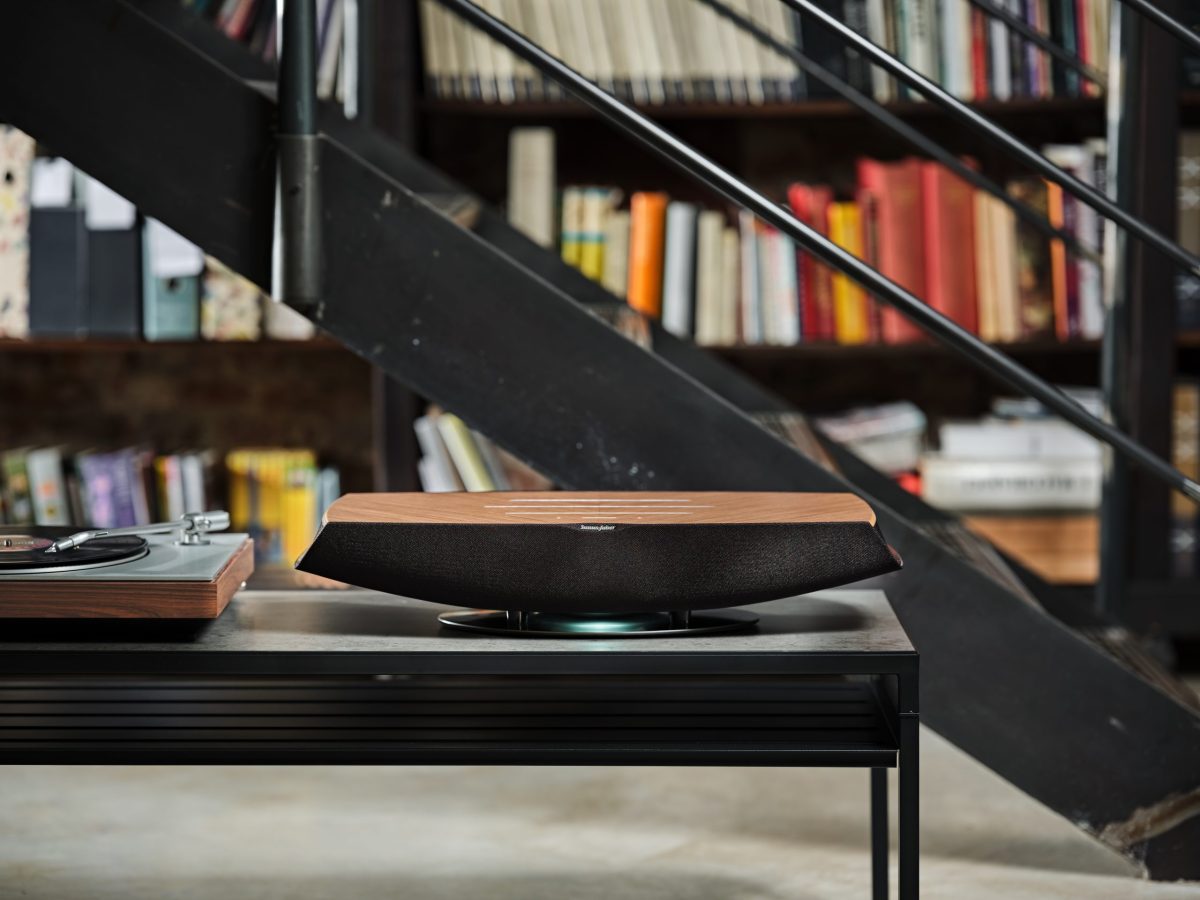[ad_1]
Italian speaker manufacturer Sonus Faber has been hand-making audio equipment for over 40 years and their very first speaker, called the Snail, was an all-in-one unit. The pioneering brand made a second iteration of the Snail in 2016, but the Omnia wireless speaker system—launching today—marks a new phase for a company that’s mostly been for serious audiophiles. We tested the Omnia in advance of the launch and spoke with Livio Cucuzza, Chief Design Officer at McIntosh Group (of which Sonus Faber is a part), about the design of a unit that spent over three years in development.

Beyond its sophisticated, minimal design, the Omnia boasts self-amplifying speakers that also act as technological hubs. “Normally a passive loudspeaker system has no ‘brain’—no electronics inside,” Cucuzza explains. The Omnia, however, has a very complex brain. It works with AirPlay 1 and 2, Chromecast, Bluetooth and WiFi, and connects to higher bitrate streaming services like Spotify Connect, Tidal Connect and Roon Ready. And, it has an HDMI ARC input in order to function as a soundbar for a connected TV.
Omnia also offers both analog and digital inputs, with a MiniDin phono line cabling for turntables. It detects a library of different phono cartridges as well. To handle all these sources and read the input (for example, film dialogue), the system uses a new kind of sound-processing circuitry, called Crescendo, which properly balances specific audio registers against other sounds.

Impressively, all the electronics that are required for this fit inside a unit that’s just five by 25 by 11 inches; one that still contains two silk dome tweeters, two three-inch cone mid-range speakers, a 6.6-inch down-facing subwoofer, plus two full-range drivers. The resulting sonic detail and warmth are extraordinary—and it cranks to 108dB, which is just below the level at a live concert.
As for the Omnia’s look, Sonus Faber drew inspiration from the hull of a boat. “It’s organic and not squared, which is important. It’s in our DNA to make something beautiful when it is not receiving power,” Cucuzza explains. “What you have in your home shouldn’t follow two sets of rules, one for technology and one for furniture.” The team wanted to create an object that could be on display just like a beautiful chair or artwork.

The shape is also due to the team at Sonus Faber studying hydrodynamics and sound waves. “If you think about sound waves, they are pretty similar to water waves and so the link is there,” he explains. The design even mirrors another boat-like theme: a ship in a bottle, wherein the form sits on a stand. Omnia does as well, in part to solve the engineering challenge to open the cabinet at the base to allow the down-facing subwoofer to have the best resonance. The pedestal not only solved that, but also created more possibilities. With an opening below the cabinet to experiment with, designers played with inserting an LED inside the structure. The white LED only illuminates when Omnia is processing sound, because “we wanted something alive, to give you a kind of animation made by the music,” Cucuzza says. Turn up the volume on a bass-heavy track and the LED dances, since it’s pointing at the aluminum cone of the subwoofer and reflecting the LED off of it and back to the pedestal.

The light bars on top of the unit presented a challenge because “wood is alive,” Cucuzza explains. “It moves and changes with temperature and humidity.” Solving that problem and also creating a touch interface that’s completely seamless was so complex that Sonus Faber has applied for several patents on the production.

Another element of those lights is that the main touch control changes hues depending on the sound source—which was truly an accident. “We wanted these clean, white LEDs but then we discovered some streaming services require a specific color to be certified,” he tells us. “When you play Spotify, you need to have your unit show a green light. When you play with Tidal the light must be this light, light blue.” As a result, designers began creating their own hues for the territory that wasn’t defined, using a beautiful yellow for Airplay, a light pink for streaming from Roon and a dark fuchsia (rosa romantico in Italian) for vinyl. Like the white light bouncing from the subwoofer, these elements aren’t merely communication, says Cucuzza. “It’s so that the owner will discover the experience along the way and appreciate it further.”
Images courtesy of Sonus Faber
[ad_2]
Source link https://coolhunting.com/tech/designing-the-sonus-faber-omnia-speaker-system/

Leave a Reply
You must be logged in to post a comment.